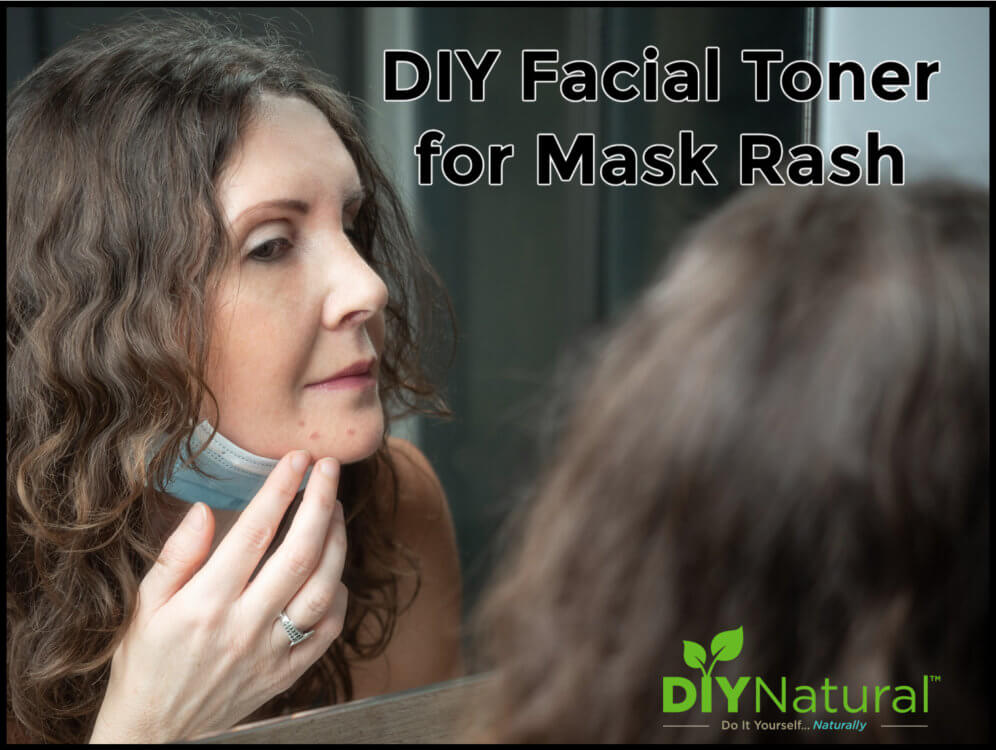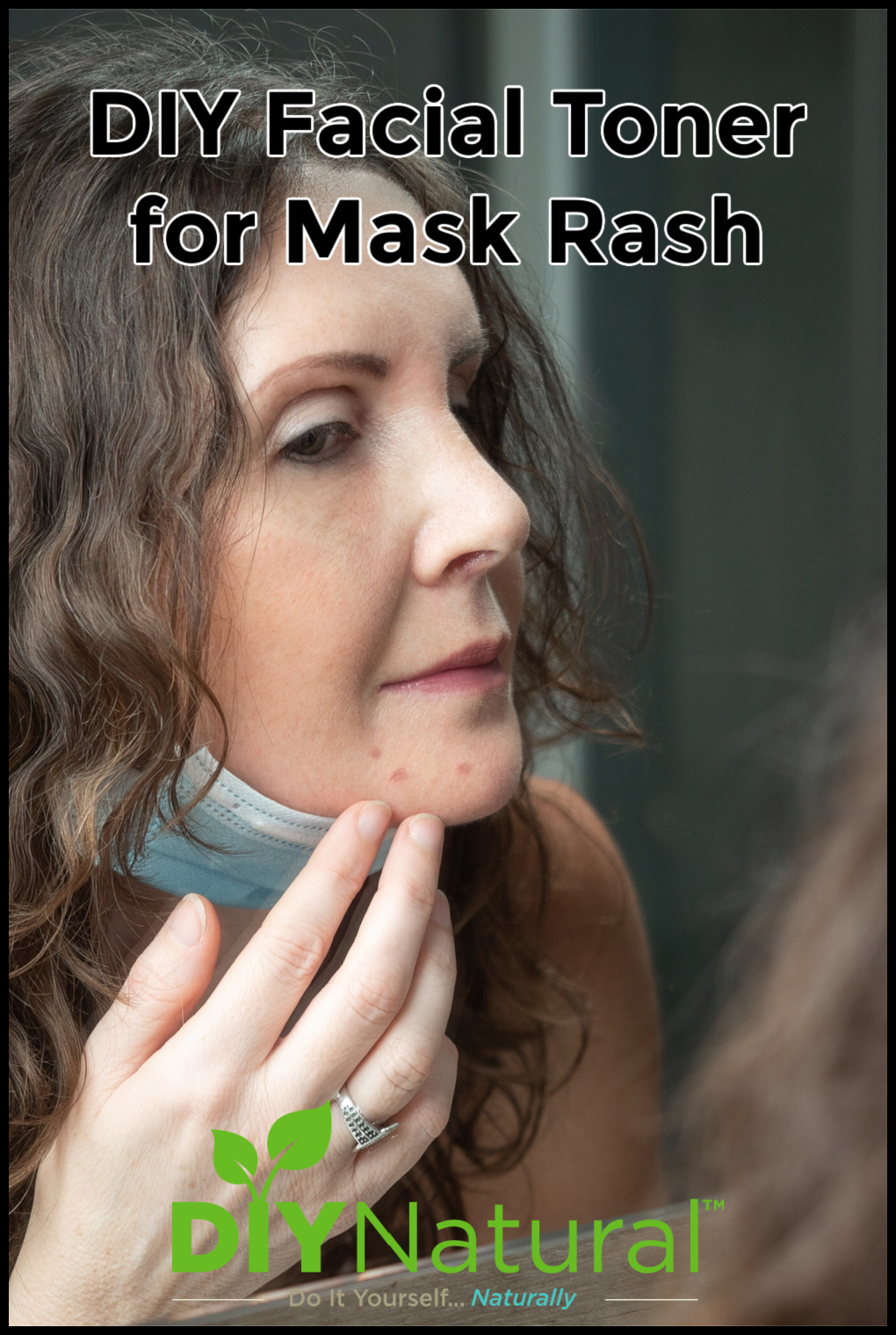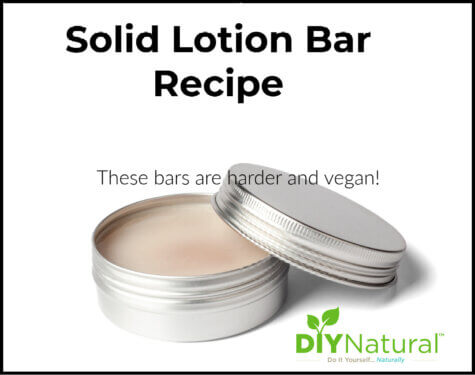
Face masks have become a big part of life and with face masks comes mask rash. This DIY toner helps eliminate rash and restore healthy skin.
Facial masks are a part of everyday life now. Since I started wearing one, I’ve noticed that my face has been breaking out more in the contact areas. It’s still summer, so I didn’t want a cream to combat the rash. I came up with this toner instead.
The Base for the Mask Rash Toner
I used witch hazel for the base of my toner. It’s inexpensive (and you can even make your own!) and somewhat easy to find. You can infuse it with herbs like I’m about to show you.
- 1 cup witch hazel extract
- 1/4 cup dried herbs, such as chamomile, mint, or plantain (if they are fresh, use 1/2 cup)
- Nonreactive pot
Start by getting your witch hazel hot. Don’t simmer it or you’ll lose a lot of the alcohol. Witch hazel usually contains 20% alcohol. Take off heat. Add your herbs and stir well. Cover with a plate or saucer. If you use the lid, invert it so it’s upside down. This will allow any steam to hit the lid, condense, and fall back into the pot. Let the brew sit until cool. Strain well. This will be the base for your toner. Store in a glass jar until ready to use.
Making Your Mask Rash Toner
This toner is very versatile, so you can customize it to your skin type. You can add essential oils or you can leave it plain. I’ll give you a few suggestions.
- 1/2 cup toner base
- 20-25 drops essential oil
- 3-4 drops liquid lecithin or Turkey Red Oil
- 2-3 teaspoons alcohol (I use 40% vodka)
Pour your mask rash toner base into a stainless steel bowl. Add your alcohol, essential oil, and Turkey Red oil. Use a whisk or small stick blender to mix well. Pour into a jar and close tightly.
To use your facial toner, pour a tiny amount onto a cotton ball or cotton pad. Squeeze out excess. Apply to your face, making sure to hit all the areas where the mask comes in contact with your face.
Herbs to Use for the Base
You can use almost any skin-loving herb for the base of the toner. I like plantain because it’s very healing. Marshmallow root is another good choice with its soothing ability. Comfrey is healing to the skin as well. Chamomile can be very soothing with its scent alone. Lavender can help to regenerate skin cells. And tea tree is healing as well. If you live in Florida, you can use the leaves of the Melaleuca trees there. These are actually Cajeput trees. Cajeput was used as an aftershave lotion in the ’50s and ’60s. Some still use it today. You can leave your base plain, but adding herbs can give your skin an extra boost.
Essential Oil Options
As with the herbs, the choice of which essential oils to use in your mask rash toner is up to you. My new favorite is frankincense. It’s healing and soothing at the same time. And it smells wonderful! Lavender would be a good choice here as well as chamomile. Rose can help to keep your skin soft and tea trees can help to kill bacteria. Whatever you use, be sure that it works for your skin type. I have very oily skin, so I normally need something more astringent. Using what works for your skin helps to keep the normal balance.
Emulsifiers
To help keep the oil and water portion of the mask rash toner blended, you can use an emulsifier. There still could be some separation, but shaking it will help. Liquid lecithin is a good choice here. Soy is the most common type although other sources are available, such as sunflower. Turkey Red oil is a type of castor oil that blends water and oil very well. It can be a bit expensive, but you only need a few drops. If you choose not to use an emulsifier, just be sure to shake your toner before you use it.
You may find that when you first start using this toner that your face will break out a bit more. This is a normal reaction of your facial skin starting to rid itself of the toxins in it. Your facial skin takes about 21 days to completely renew itself, so you should start to see improvements before that time.
Have you found a way to deal with mask rash? Tell us about it!
*******



